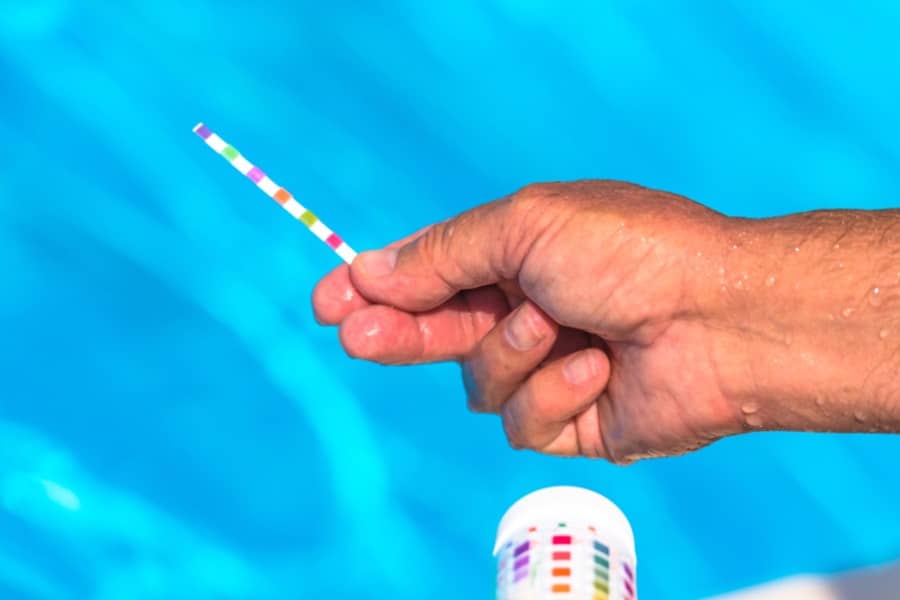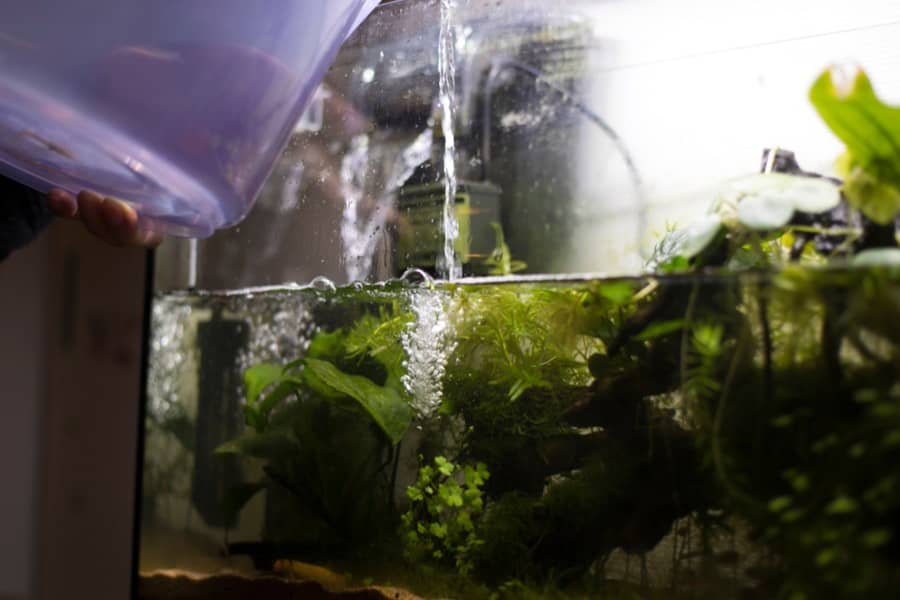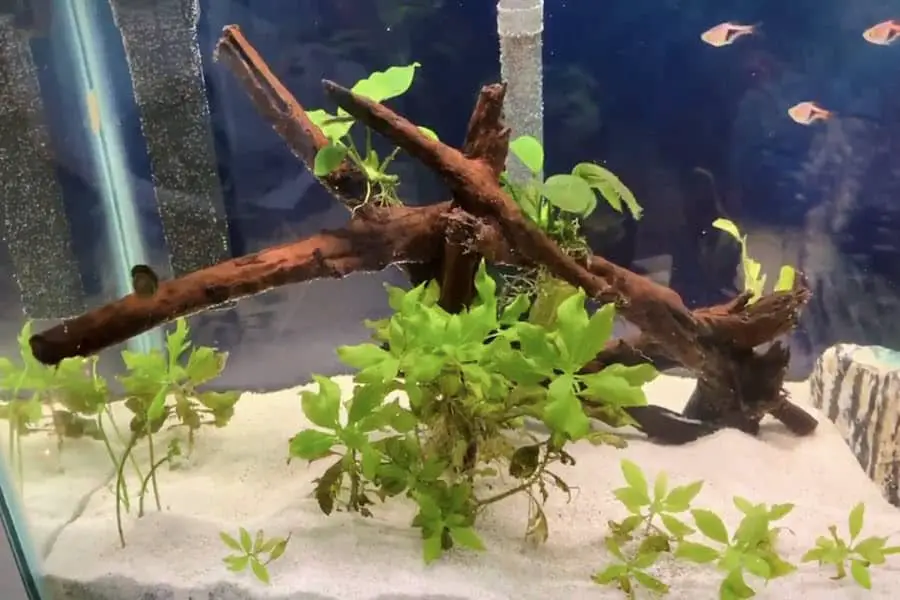How To Maintain pH Level In Aquarium: A Quick Guide
The pH of your aquarium is a significant factor in determining the quality and chemistry of the water. Most fish can adapt to a pH that is slightly off their preference. However, the constant fluctuations can cause severe stress and, in extreme conditions, may lead to fatalities.
Regularly monitor and measure your pH and when you find fluctuations in it, immediately take the preventive measures. To raise your aquarium pH, perform water changes, add crushed corals, increase aeration, or use baking soda. For lowering the pH, you can filter water through peat moss, pump CO2 in water, or add driftwood to the tank.
If you want to know the major factors that influence the pH in aquariums and how to maintain the right levels, keep reading.
Aquarium pH 101: A Beginner Overview

Maintaining water quality is the most important factor in keeping your aquarium healthy. Most newcomers associate high-quality water with clean water. But it’s not the optimal way to measure the quality of the aquarium water. Healthy tanks are measured by their balanced pH levels.
Most freshwater fish are adaptable to a wide range of pH. However, the sudden fluctuations in the water are highly stressful to the fish. A stable pH level is crucial. Young and sick fish are most susceptible to pH fluctuations. Certain fish species only breed within a specific pH range.
When transporting fish from one aquarium to another, match the pH levels beforehand. For your tiny pet, sudden stressful changes can occur in this case.
Best pH Value For Aquariums
The truth is, there is no one ‘best pH value’ that suits all fishes. Optimum pH levels for fish and other aquatic lifeforms vary by species. Most freshwater fish prefer a pH range between 5.5 and 7.2, with a little exception at both the high and the low end of the pH scale. Most live plants thrive between a pH range of 6.5 to 7.5.
How Often To Check pH of your aquarium?
Test your tank’s pH at least once a month, or preferably every two weeks. The latter allows you to detect early signs of pH-related issues before the condition gets worse. pH isn’t static and may change over the course of a day. Moreover, testing pH levels at different times of day can produce different results.
- When there is a death in an aquarium, or you suspect your fish to be ill, check the water for the pH value.
- After dosing your tank with medication, always test the water for a pH at the beginning and after a week.
- Test your aquarium pH value when you go out to buy new fish. It is to ensure that the pH difference between home and pet shops isn’t significantly higher or more than 0.2 units on either side of the pH scale.
Should pH Be Altered?
When dealing with fish species highly-sensitive to pH, the levels should be altered as soon as you discover any significant change.
Most freshwater fish can tolerate a wide range of pH. So until it remains in the safe range or is slightly higher or lower than the ideal pH required by the fish, you may not need to do anything.
However, if the pH keeps fluctuating or the fish has started showing signs of distress, you must take measures to stabilize it.
How to Maintain pH Level in Aquariums?
The pH value of a water body is easily influenced. A slight change in the chemical concentration, or the presence of trace minerals, will impact the pH levels. Maintaining a balanced pH requires you to monitor and measure water parameters regularly.
First, identify the pH level suitable for your fish. Your aim is to keep the pH within the safest range required by the inhabitants. Any time you experience sudden changes in your tank, take preventive measures to bring the balance back.
To measure pH in your tank, you can use pH test strips. For precise readings, we recommended using Digital PH Meter Tester.
How to Safely Raise pH in Aquarium?
Before we get into the methods to increase the pH levels in aquariums, let’s talk about the common factors that cause the tank’s pH to be lower or acidic.
- A high amount of pollutants and fish waste in the water
- Overfeeding
- High nitrates levels
- Decreased aeration
- Driftwood
- Performing water changes using low pH water sources
- Sick or decaying fish
Removing anything that may be lowering your pH is the first step to preventing the levels from dropping further. For some unknown reason, if your tank’s water has become dangerously acidic, the following methods will help you safely raise the pH and balance it.
Water Changes

To naturally raise the aquarium pH to the levels of your tap water, perform water changes. Don’t do it all once; rather, go for partial water changes. As it prevents the shock and provides the time for the fish to adjust to the new tank conditions.
Adding Rocks or Substrate
Adding certain types of rock or substrate to the tank can help raise the pH. Crushed corals, petrified corals, and limestone are some of the rock items majorly used for increasing pH levels in fish tanks.
The best way is to buy a bag of crushed corals from any local fish store and place it in the filter. You can also add shells to the tank for raising pH.
NOTE: Exercise caution when introducing pH-increasing rocks to your tank. It may cause an imbalance by raising the pH beyond what is required.
Increase Aeration
Aerating your aquarium is yet another natural way to increase the pH levels. It creates agitation and helps oxygenate the water. As a result, it causes a gas exchange reducing the CO2 levels and allowing it to escape. Keep in mind that excess carbon dioxide concentration is one of the reasons that cause the pH levels to drop in a fish tank.
Depending on how big your aquarium is, you can use one or more air pumps, bubblers, or other aeration equipment.
Baking soda

Yes, you heard it correctly. Adding baking soda to your tank will raise its pH values. As a general rule of thumb, add one teaspoon of baking soda per 5 gallons. It will help you make incremental changes in the pH, allowing the fish to acclimatize to the new pH without any stress.
Take a separate container, dissolve the baking soda in some water, and then pour it into your aquarium. You may have to repeat this process a few times until the pH is reached the desired levels.
Chemical Treatment
When you have tried everything, but nothing seems to be working out, as a last resort, you can chemically treat your aquarium using commercial buffers. They are quite effective, so use them carefully and in the right amount. Otherwise, you may end up causing severe spikes in the pH level leading to imbalance.
How to Lower pH in Aquarium?
The cases of an increase in aquarium pH are less commonly seen. If you found high pH in your tank, it could be due to one or more of the following reasons:
- Your source water is highly-alkaline
- Your tank has a lot of live plants and algae presence
- You have pH raising rocks like crushed coral in your aquarium
To safely lower your fish tank pH value, follow the methods given:
Peat Moss
Filtering water through peat moss is one of the best ways to lower pH. Put peat moss into a mesh bag and place it in your filter. Initially, you may see discoloration in the water, but it will be cleared soon. Peat moss is effective and works gradually.
Add Carbon Dioxide
You can increase the amount of carbon dioxide in your tank to drop pH levels.
Add Driftwood

Certain driftwood can be used to lower the pH of an aquarium naturally — driftwood, when it remains submerged, releases tannins in the water that acts as a pH-reducing agent. Tannins can also cause the water to be yellow or brown.
Depending on the size of your aquarium, you may have to add one or more right-sized driftwood to make it effective.
Chemicals
There are a plethora of pH-lowering aquarium-grade chemicals available on the market you can purchase. It temporarily drops the pH, so don’t expect it to keep the levels stable.
Conclusion
Even if your tank’s pH slightly rises or drops than the preferred range but remains stable, your fish will adapt to it over time. The sudden and drastic changes in the pH are harmful to the fish.
Focus on maintaining a stable pH and less on hitting a specific value you have learned from the internet. Until there are no signs of distress in fish, don’t fiddle with your pH.
